Order: Charadriiformes. Family: Laridae
Description
Hartlaub's Gull is 36–38 cm in length. It is a mainly white gull with a grey back and upperwings, black wingtips with conspicuous white "mirrors", and a dark red bill and legs. Dark eye. Sexes are similar.
When breeding it has a very faint lavender grey hood, but otherwise has a plain white head.
The juvenile has an all white head and a dark brown bill and brown legs and only a few spots oh the tip of the tail. Juvenile birds have a brown band across the wings.
Similar species: In comparison with breeding Grey-headed Gull, it is slightly smaller, has a thinner, duller bill, only a suggestion of a grey hood, dark, not silver eyes, and deeper red legs. Juvenile differs from same-age Grey-headed Gulls in that they lack a black terminal tail band, less dark areas in the wings, darker legs, and a white head. Juvenile Hartlaub's Gull also lacks the two tone bill. Both, Black-headed Gull and Franklin's Gull lack the dusky underwing.
Distribution: Endemic to southern Africa, occurring along of the coast of Namibia (up to Cape Cross) and the Northern and Western Cape. Hartlaub’s Gull breeds on the west coast between Swakopmund and Dyer Island, with a small, isolated colony at the Heuningnes River mouth. About one half of the total population, currently estimated at about 30 000 birds, are within the Greater Cape Town area. It breeds in large colonies, and the main traditional breeding colony for the Cape Town area is on Robben Island.
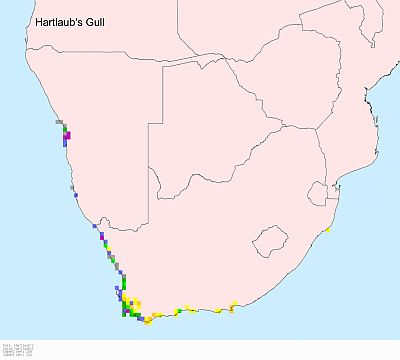
Habitat
It generally prefers coastal habitats, especially if disturbed by human activity, in fact approximately half of its population occurs in man-made areas.
Diet
It mainly eats fish and aquatic invertebrates, doing most of its foraging by seizing prey from the water surface while swimming, plunge-diving, scavenging in the wake of trawlers, plucking food from the ground or hawking termite alates aerially.
Breeding
Monogamous colonial nester, with each pair defending a small territory around the nest, defending it by performing aggressive displays. The nest is an untidy bowl of plant stems, typically placed on rocky ground or alternatively among reeds or on a man-made structure, such as guano platforms, buildings, roofs, dam walls and flower pots. Egg-laying season is mainly from March-June in Namibia, and from January-October, peaking from February-April in the Western Cape, although it may breed at any time of year depending on environmental conditions. It lays 1-3 blotched, light-brown or green eggs, which are incubated by both sexes for about 25 days. The chicks are fed by both parents by regurgitation; if a snake approaches the young, the adults attack the intruder.
Call
A very noisy bird, the Hartlaub’s Gull has a raucous call that is not unlike that of a crow, kwaarr. Also a pok-pok. Listen to Bird Call.
Status
Common to abundant endemic resident.



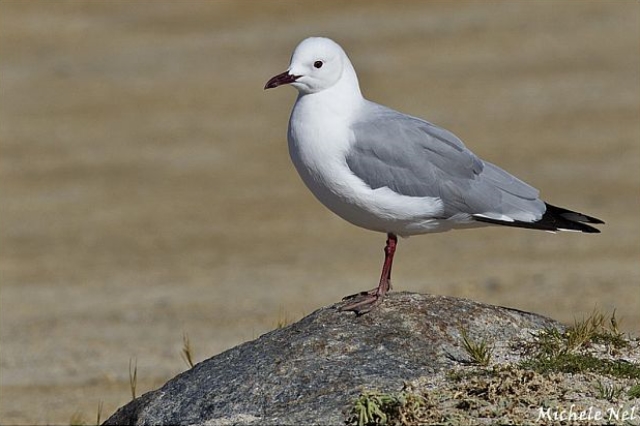 © Michele Nel
© Michele Nel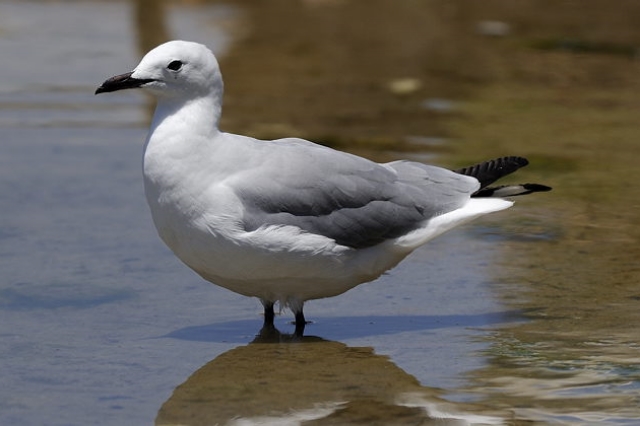 © Dewi
© Dewi © Toko
© Toko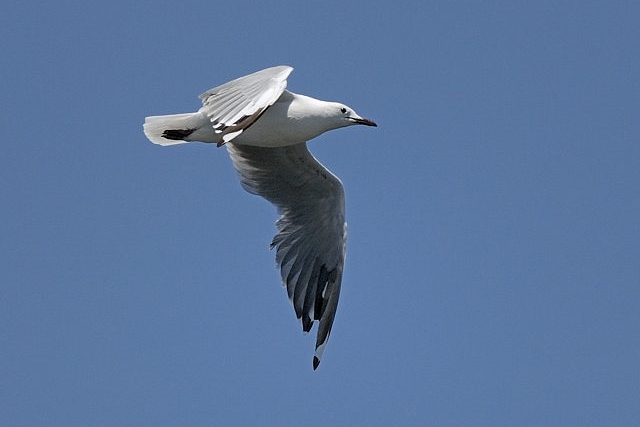 © Dewi
© Dewi © nan
© nan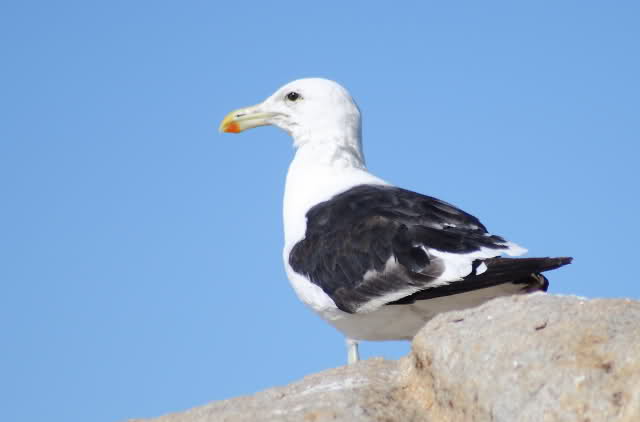 © Flutterby
© Flutterby © Toko
© Toko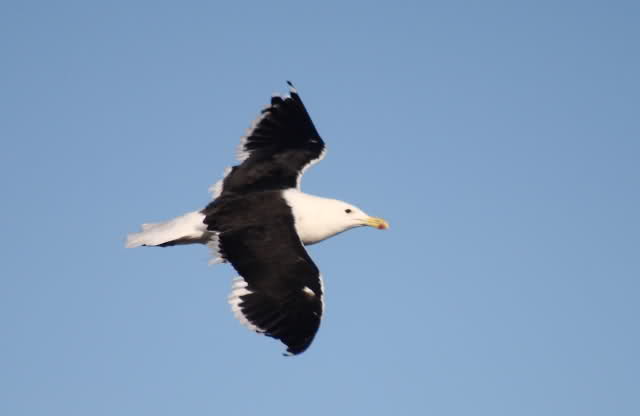
 © Dewi
© Dewi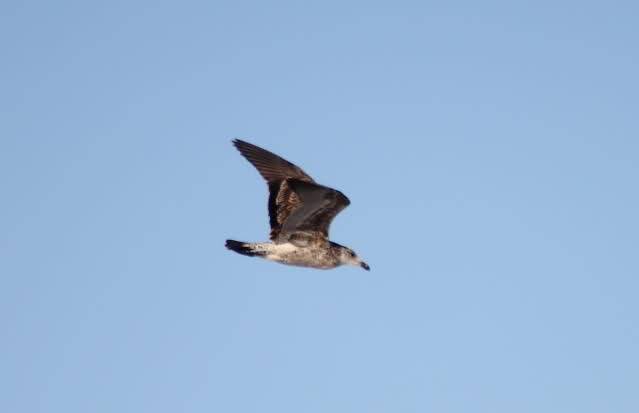
 © Toko
© Toko
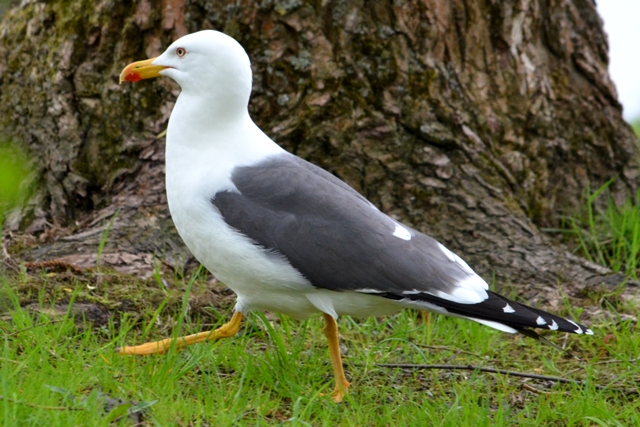 © Mel
© Mel

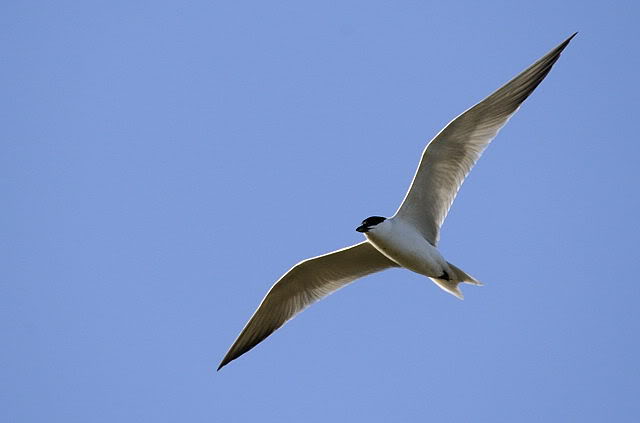
 © Flutterby
© Flutterby © Grumpy
© Grumpy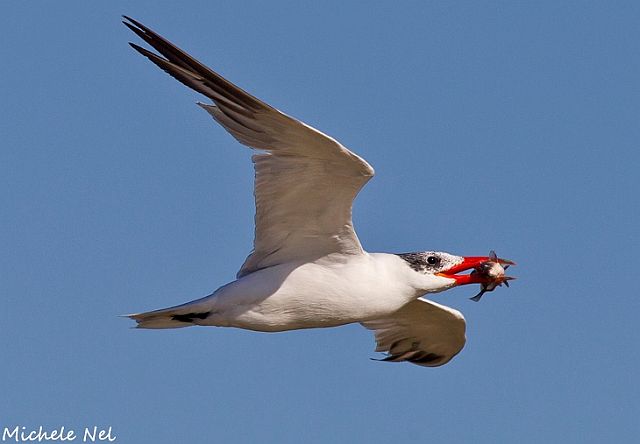 © Michele Nel
© Michele Nel